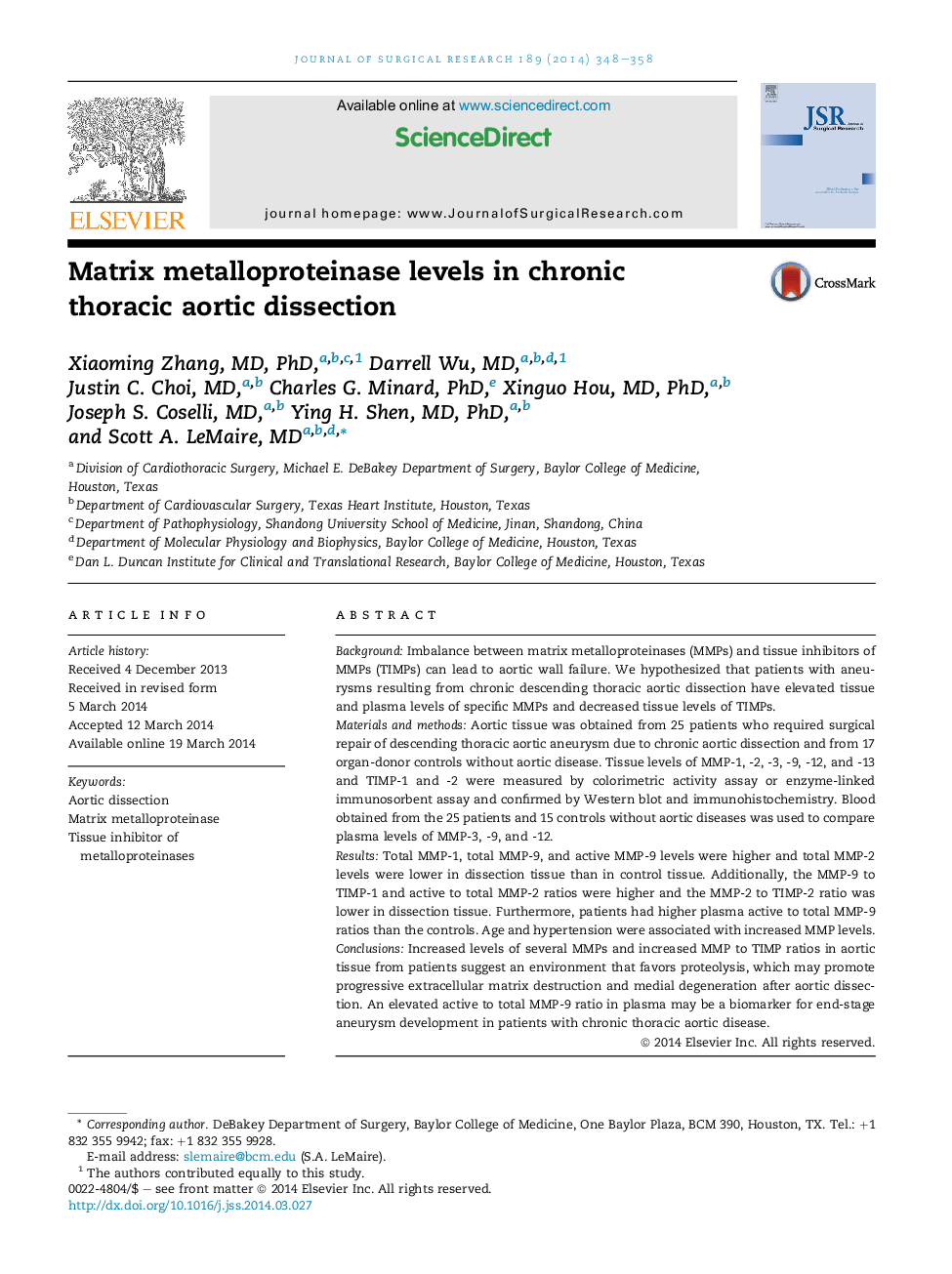| Article ID | Journal | Published Year | Pages | File Type |
|---|---|---|---|---|
| 4300114 | Journal of Surgical Research | 2014 | 11 Pages |
BackgroundImbalance between matrix metalloproteinases (MMPs) and tissue inhibitors of MMPs (TIMPs) can lead to aortic wall failure. We hypothesized that patients with aneurysms resulting from chronic descending thoracic aortic dissection have elevated tissue and plasma levels of specific MMPs and decreased tissue levels of TIMPs.Materials and methodsAortic tissue was obtained from 25 patients who required surgical repair of descending thoracic aortic aneurysm due to chronic aortic dissection and from 17 organ-donor controls without aortic disease. Tissue levels of MMP-1, -2, -3, -9, -12, and -13 and TIMP-1 and -2 were measured by colorimetric activity assay or enzyme-linked immunosorbent assay and confirmed by Western blot and immunohistochemistry. Blood obtained from the 25 patients and 15 controls without aortic diseases was used to compare plasma levels of MMP-3, -9, and -12.ResultsTotal MMP-1, total MMP-9, and active MMP-9 levels were higher and total MMP-2 levels were lower in dissection tissue than in control tissue. Additionally, the MMP-9 to TIMP-1 and active to total MMP-2 ratios were higher and the MMP-2 to TIMP-2 ratio was lower in dissection tissue. Furthermore, patients had higher plasma active to total MMP-9 ratios than the controls. Age and hypertension were associated with increased MMP levels.ConclusionsIncreased levels of several MMPs and increased MMP to TIMP ratios in aortic tissue from patients suggest an environment that favors proteolysis, which may promote progressive extracellular matrix destruction and medial degeneration after aortic dissection. An elevated active to total MMP-9 ratio in plasma may be a biomarker for end-stage aneurysm development in patients with chronic thoracic aortic disease.
